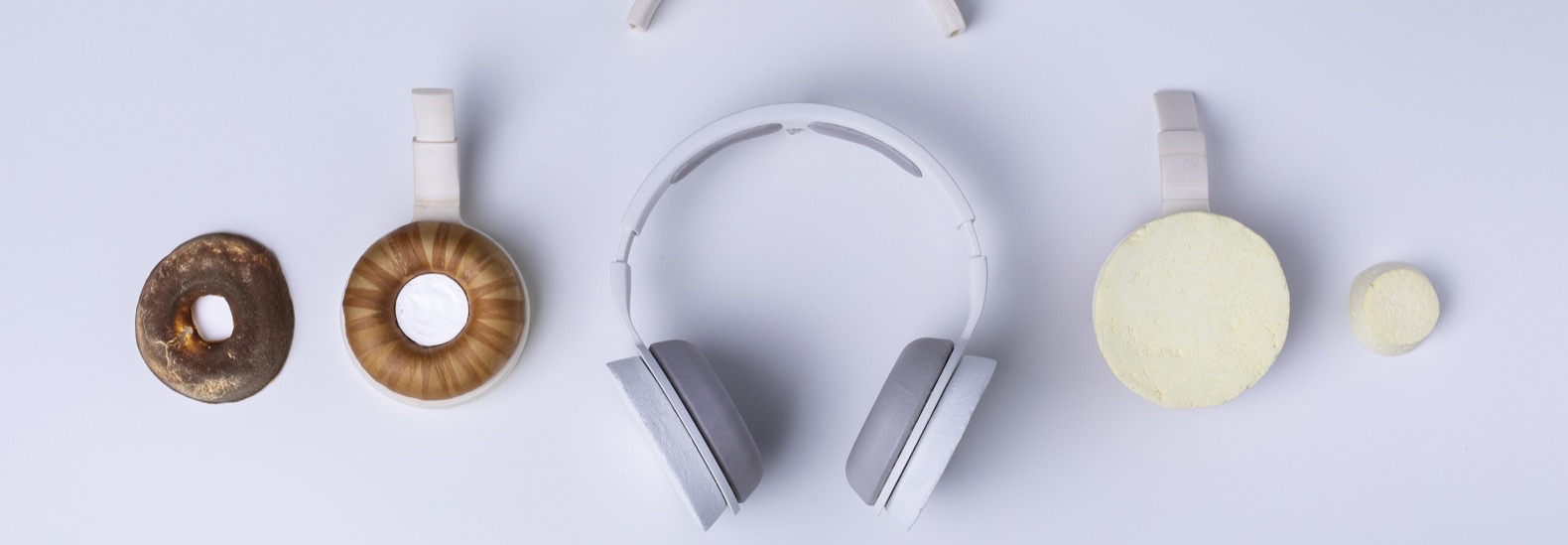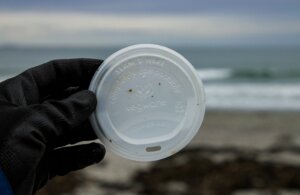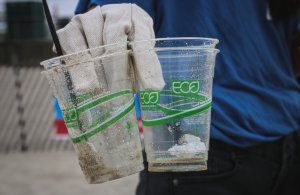The name Korvaa originates from Finnish, in which the noun “Korva” means ear and the verb “Korvaa” means to substitute, compensate or replace. (Credit: Inhabitat.com)
Move over plastic and aluminum — the headphones of the future may be built from fungus and biosynthetic spider silk, says Lucy Wang in an article on Inhabitat.com. Helsinki-based multidisciplinary design studio Aivan recently unveiled Korvaa, the world’s first headphones made exclusively from microbially grown materials. Created using synbio (short for “synthetic biology,” an interdisciplinary branch of biology and engineering), Korvaa is the first physical implementation of the technology and marks a potential shift away from a fossil fuel-based economy and toward a more sustainable, circular “bioeconomy.”
Aivan designers created the Korvaa in collaboration with synbio scientists, industrial designers, artists and filmmakers. The team chose headphones as their first physical implementation of synbio technology because of its compact form and incorporation of different material properties, from hard surfaces to mesh fabric. The name Korvaa originates from Finnish, in which the noun “Korva” means ear and the verb “Korvaa” means to substitute, compensate or replace.
”We’re looking at these different materials and their properties, trying to figure out how to use them, and what to make out of them — as opposed to designing an item and then figuring out what materials we want to use,” said Aivan product designers Saku Sysiö and Thomas Tallqvist. “Process-wise, it’s almost like something out of the stone age. It sets this particular project apart from any other contemporary, wearable-tech project.”
Two versions of the Korvaa headsets have been created. Each headset consists of six microbe-grown components with different properties: enzymatically produced, lignin-free cellulose; 3D-printed biodegradable microbial bioplastic PLA for the rigid headset frame; a leather-like fungal mycelium for the soft foam material inside the headset; biosynthetic spider silk for the mesh-like material inside the earphone; a composite of fungal mycelium and bacteria cellulose; and protein foam with plant cellulose. The documentation of the processes for creating both headphones will be displayed at the Fiskars Village Art & Design Biennale 2019 from now until September 19 as well as at Helsinki Design Week 2019 from September 5 to September 15.










